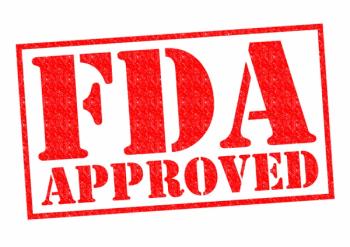
Combining DPP-4 Inhibitor, SGLT2 Inhibitor for Type 2 Diabetes Cost-Effective Over Time, AJMC® Study Says
A Policy article in the May issue of The American Journal of Managed Care® suggests that sequential addition of SGLT2 inhibitors to DPP-4 inhibitors may be considered cost-effective compared with standard treatment using sulfonylurea and insulin for patients with type 2 diabetes who have difficulty maintaining glycated hemoglobin of seven percent or less on metformin alone.
A cost-effectiveness study appearing in the
Direct diabetes-related spending reached $237 billion in 2017, and that figure is expected to rise because of the obesity epidemic, the aging of the US population, and greater knowledge about the intersection of diabetes with cardiovascular disease (CVD). While newer therapies have the potential to revolutionize diabetes care, their increased costs have concerned some payers.
For patients with diabetes without established CVD or heart failure who struggle to keep their glycated hemoglobin at seven percent or less on metformin alone, the next recommended step is to combine metformin with therapies such as a dipeptidyl peptidase 4 (DPP-4) inhibitor, a sodium glucose cotransporter 2 (SGLT2) inhibitor, a thiazolidinedione, a sulfonylurea, a glucagon-like peptide 1 (GLP-1) receptor agonist, or basal insulin.
For patients with diabetes with established CVD, guidelines recommend an SGLT2 inhibitor or the GLP-1 receptor agonist liraglutide.
The authors used the IQVIA CORE Diabetes Model to run a cost-effectiveness computer simulation of patients and compared two treatment pathways. One pathway, branded combination therapy with DPP-4 inhibitors and SGLT2 inhibitors, was compared with a second pathway consisting of a generic alternative with sulfonylurea and insulin on a background of metformin.
The combination of DPP-4 inhibitors and SGLT2 inhibitors resulted in higher direct medical costs but also increased total QALYs by 0.24. The incremental cost-effectiveness ratio for that pathway was favorable at $64,784/QALY.
The study was funded by Merck & Co. and was written by researchers who work for either Merck or IQVIA. Merck sells the DPP-4 inhibitor sitagliptin (Januvia). Merck also sells a combination DPP-4/SGLT2 inhibitor, sitagliptin/ertugliflozin (Steglujan).
About The American Journal of Managed Care®
The American Journal of Managed Care® (AJMC®) is a peer-reviewed, Medline-indexed journal that keeps readers on the forefront of health policy by publishing research relevant to industry decision makers as they work to promote the efficient delivery of high-quality care. AJMC.com is the essential website for managed care professionals, distributing industry updates daily to leading stakeholders. Other titles in the AJMC® family include The American Journal of Accountable Care® and two evidence-based series, Evidence-Based Oncology™ and Evidence-Based Diabetes Management™. These comprehensive offerings bring together stakeholder views from payers, providers, policymakers and other industry leaders in managed care. To order reprints of articles appearing in AJMC® publications, please contact Gil Hernandez at 609-716-7777, ext. 139.
AJMC® Media Contacts
Alexandra Ventura, 609-716-7777, ext. 121
John Patricolo, 609-325-4630, ext. 133
Newsletter
Stay ahead of policy, cost, and value—subscribe to AJMC for expert insights at the intersection of clinical care and health economics.







































